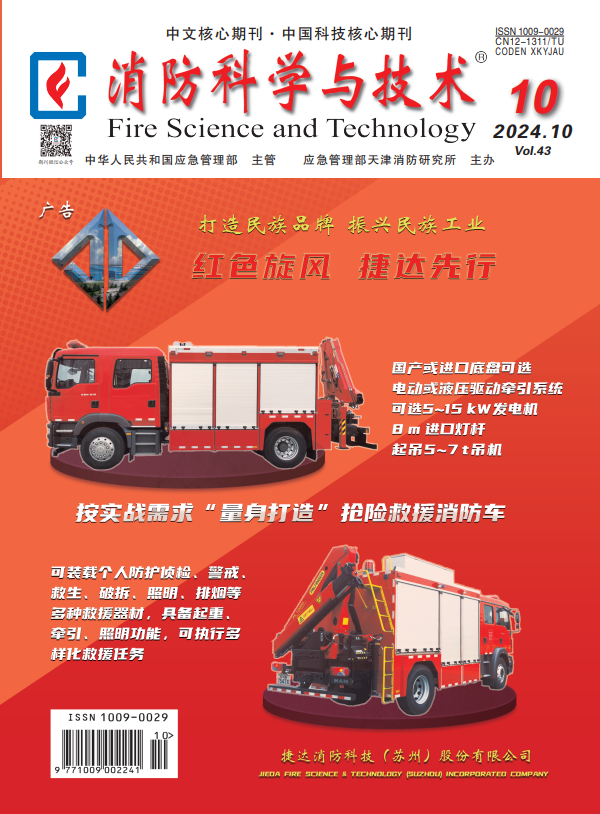|
|
Comparative study on the key performance of water-based types extinguishing agent for liquid fire
Liu Huimin, Wang Shuai, Bai Bin
2024, 43 (10):
1424-1428.
In order to further standardize the applicable fire types and fire extinguishing application scenarios of water-based types extinguishing agents such as foam extinguishing agents and water based extinguishing agents, clarify the misunderstanding of the above two types fire extinguishing agents, select the widely used aqueous film-forming foam extinguishing agent and water based extinguishing agent, according to the standard test method stipulated in GB 15308-2006 Foam extinguishing agent, the comparative test of surface tension, interface tension, expansion, 25% drainage time and fire extinguishing performance were studied. The results show that when the foam generating device is used for water-based type extinguishing agents, the key performance of aqueous film-forming foam extinguishing agent, especially the effect of liquid fire extinguishing, is better than that of water based extinguishing agents, and most of the water based extinguishing agents can not achieve the effect of liquid fire fighting. Therefore, based on the comparative test results and product standard performance requirements of water-based types extinguishing agent, suggested that the application scenarios of water based extinguishing agent is to fill water-based fire extinguishers, to fight solid and liquid early fire, and foam extinguishing agent should be combined with fixed foam fire extinguishing system and mobile fire fighting equipment like fire truck to fight the large liquid fire of petrochemical tank scenarios.
Related Articles |
Metrics
|



